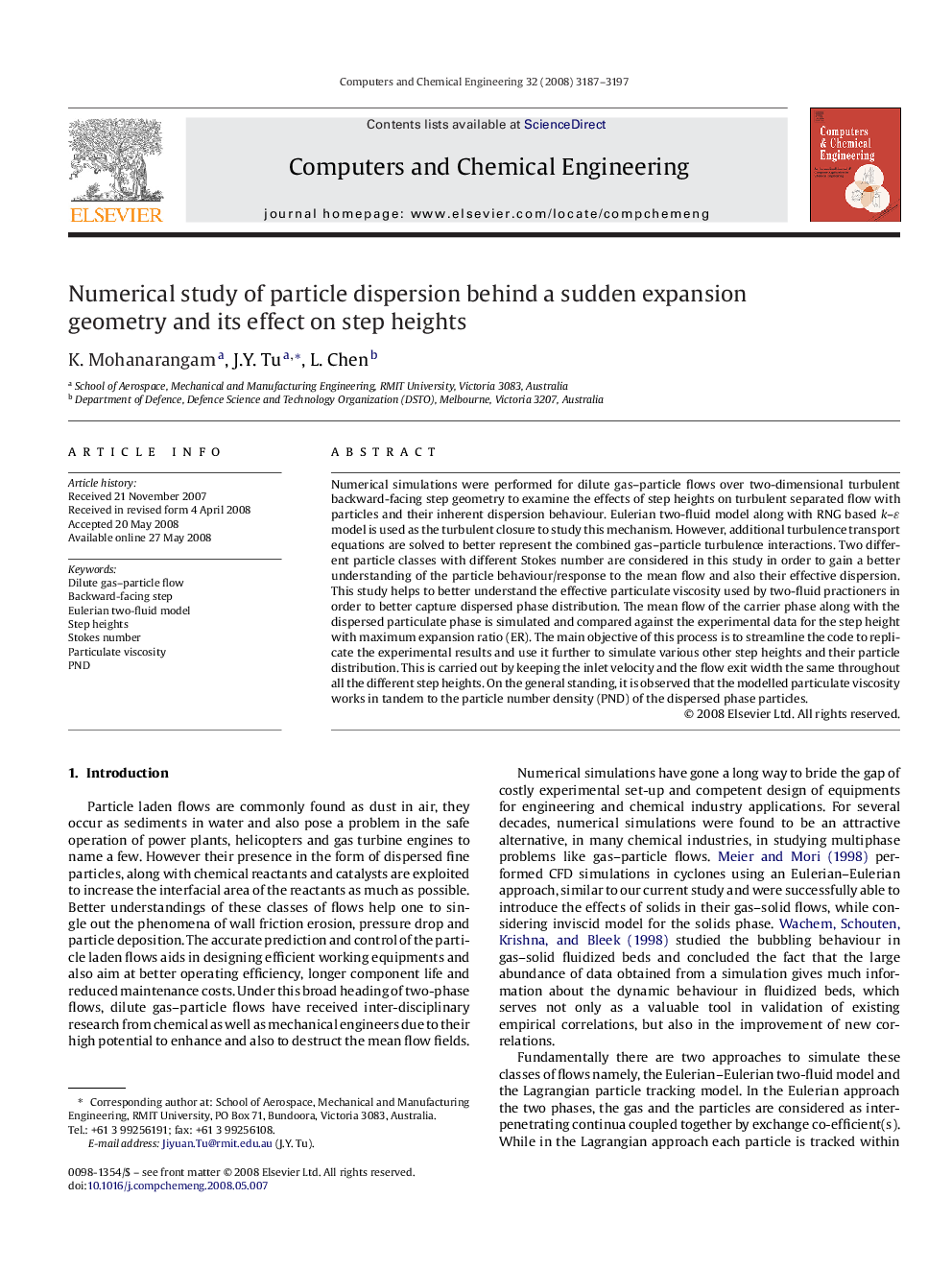| Article ID | Journal | Published Year | Pages | File Type |
|---|---|---|---|---|
| 173536 | Computers & Chemical Engineering | 2008 | 11 Pages |
Numerical simulations were performed for dilute gas–particle flows over two-dimensional turbulent backward-facing step geometry to examine the effects of step heights on turbulent separated flow with particles and their inherent dispersion behaviour. Eulerian two-fluid model along with RNG based k–ɛ model is used as the turbulent closure to study this mechanism. However, additional turbulence transport equations are solved to better represent the combined gas–particle turbulence interactions. Two different particle classes with different Stokes number are considered in this study in order to gain a better understanding of the particle behaviour/response to the mean flow and also their effective dispersion. This study helps to better understand the effective particulate viscosity used by two-fluid practioners in order to better capture dispersed phase distribution. The mean flow of the carrier phase along with the dispersed particulate phase is simulated and compared against the experimental data for the step height with maximum expansion ratio (ER). The main objective of this process is to streamline the code to replicate the experimental results and use it further to simulate various other step heights and their particle distribution. This is carried out by keeping the inlet velocity and the flow exit width the same throughout all the different step heights. On the general standing, it is observed that the modelled particulate viscosity works in tandem to the particle number density (PND) of the dispersed phase particles.
